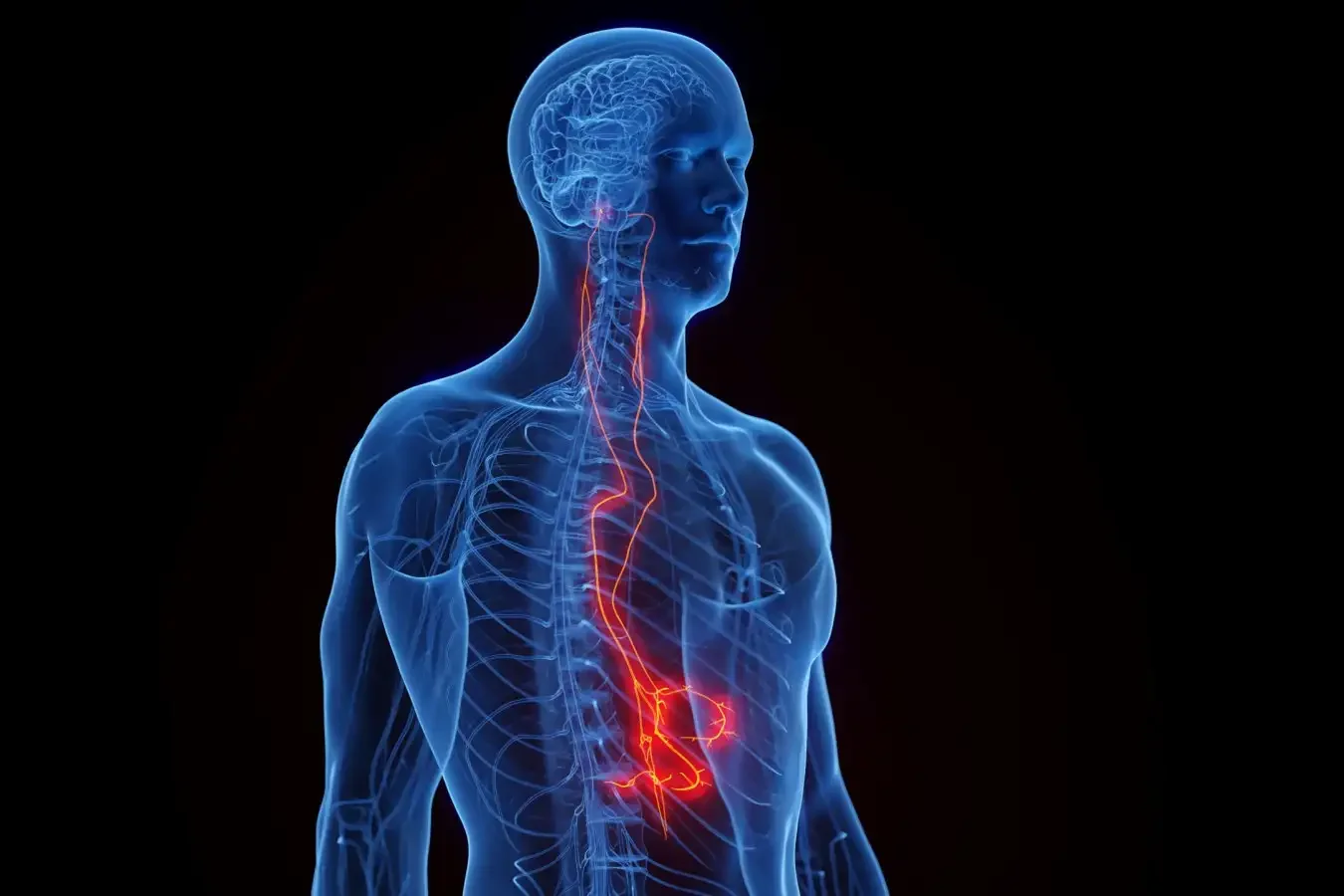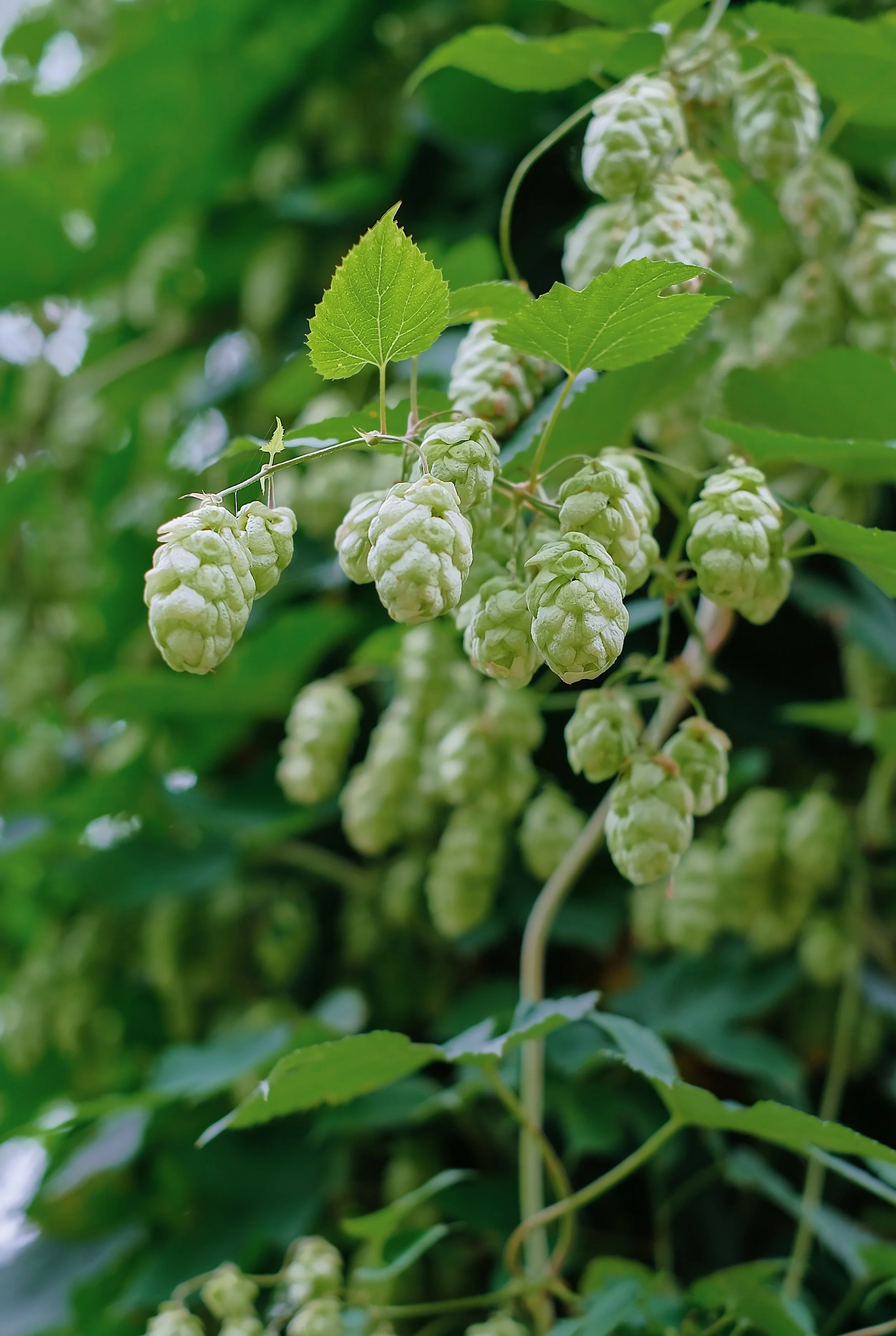
Latest Research
Connection between the Spinal Cord
and the Vagus Nerve
Various vagus nerve stimulation methods have been studied and researched. Activating the vagus nerve has shown to improve health outcomes and quality of life.
Now we have a simple oral form solution. Phix contains MHE3™, a proprietary matured hops extract that stimulates the vagus nerve for up to 9 hours. For many decades nobody has been able to extract the MHE molecules of alpha, beta and gamma forms at a concentration that gets the results we see with pHix. Phix contains matured hops molecules that are stabilized so it remains bioactive and efficacious. It is the simplest solution to activating the vagus nerve naturally. Phix is a plant based, revolutionary, stimulant free, tasteless liquid that can be added to any beverage. It is suitable for adults and children.
Vagus nerve activation is a promising therapy for aiding recovery from spinal cord injury (SCI). While the vagus nerve itself is not directly damaged by SCI due to its cranial nerve pathway bypassing the spinal cord, its stimulation can influence neural plasticity and autonomic functions, potentially improving outcomes in motor function, sensory recovery, and visceral dysfunctions like bladder control. Here's an overview based on recent research:
Mechanisms and Benefits
- Neuroplasticity and Motor Recovery: VNS, particularly when paired with rehabilitative training, enhances synaptic plasticity, promoting the rewiring of neural circuits. Studies in rat models with cervical SCI show that closed-loop VNS (CLV), triggered during successful movements, significantly improves forelimb function compared to rehabilitation alone. For instance, a 2018 study reported 77% more recovery in forelimb function when VNS was combined with intensive rehabilitation.¹ ²
- Autonomic Function: SCI often disrupts autonomic functions (e.g., heart rate, digestion, bladder control) due to impaired communication between spinal and vagal pathways. VNS can modulate the parasympathetic nervous system, potentially mitigating issues like autonomic dysreflexia, where the body overreacts to stimuli below the injury level. Research suggests VNS may help regulate visceral functions by enhancing vagal tone, which supports relaxation and homeostasis.³ ⁴
- Anti-Inflammatory Effects: VNS has anti-inflammatory properties that may reduce neuroinflammation post-SCI, a key factor in secondary injury. By modulating cytokines like IL-6, VNS could protect the blood-spinal cord barrier and promote healing. ⁵ ⁶
- Bladder Dysfunction: SCI often causes urinary dysfunction due to disrupted neural control. VNS paired with bladder rehabilitation may strengthen spared neural pathways, improving bladder compliance and reducing complications like urinary tract infections.⁴
National Library of Medicine, June 2023
Application of Vagus Nerve Stimulation in Spinal Cord Injury Rehabilitation
Spinal cord injury (SCI) is a prevalent devastating condition causing significant morbidity and mortality, especially in developing countries. The pathophysiology of SCI involves ischemia, neuroinflammation, cell death, and scar formation. Due to the lack of definitive therapy for SCI, interventions mainly focus on rehabilitation to reduce deterioration and improve the patient's quality of life. Currently, rehabilitative exercises and neuromodulation methods such as functional electrical stimulation, epidural electrical stimulation, and transcutaneous electrical nerve stimulation are being tested in patients with SCI. Other spinal stimulation techniques are being developed and tested in animal models. However, often these methods require complex surgical procedures and solely focus on motor function. Vagus nerve stimulation (VNS) is currently used in patients with epilepsy, depression, and migraine and is being investigated for its application in other disorders. In animal models of SCI, VNS significantly improved locomotor function by ameliorating inflammation and improving plasticity, suggesting its use in human subjects. SCI patients also suffer from nonmotor complications, including pain, gastrointestinal dysfunction, cardiovascular disorders, and chronic conditions such as obesity and diabetes. VNS has shown promising results in alleviating these conditions in non-SCI patients, which makes it a possible therapeutic option in SCI patients.¹
University of Texas, Dallas, May 21, 2025
Closed-loop vagus nerve stimulation aids recovery from spinal cord injury
Decades of research have demonstrated that recovery from serious neurological injury will require synergistic therapeutic approaches. Rewiring spared neural circuits after injury is a long-standing goal of neurorehabilitation1,2. We hypothesized that combining intensive, progressive, task-focused training with real-time closed-loop vagus nerve stimulation (CLV) to enhance synaptic plasticity3 could increase strength, expand range of motion and improve hand function in people with chronic, incomplete cervical spinal cord injury. Here we report the results from a prospective, double-blinded, sham-controlled, randomized study combining gamified physical therapy using force and motion sensors to deliver sham or active CLV. After 12 weeks of therapy composed of a miniaturized implant selectively activating the vagus nerve on successful movements, 19 people exhibited a significant beneficial effect on arm and hand strength and the ability to perform activities of daily living. CLV represents a promising therapeutic avenue for people with chronic, incomplete cervical spinal cord injury.²
The oral solution to activating vagus nerve effectively and naturally is a patented mature hops extract MHE3™.
Flint Rehab, December 2, 2022
Vagus Nerve and Spinal Cord Injury: Can Stimulating the Vagus Nerve After Spinal Cord Injury Promote Healing?
The vagus nerve helps regulate the autonomic nervous system, which allows the body to maintain homeostasis. This nerve is crucial after a spinal cord injury as it can play a role in regulating autonomic dysreflexia as well as involuntary bodily functions such as blood pressure, respiration, and digestion.
Vagus nerve stimulation can help address and improve mental and physical health, which helps keep secondary effects like depression in check. Additionally, vagus nerve stimulation can include benefits such as decreased neuroinflammation, improved autonomic function, and enhanced motor performance. Vagus nerve stimulation after spinal cord injury is also more effective when accompanied by rehabilitation therapy.⁷
Frontiers Neuroscience, April 6, 2022
Vagus Nerve Stimulation Reduces Neuroinflammation Through Microglia Polarization Regulation to Improve Functional Recovery After Spinal Cord Injury
Compared with the Sham-Vagus-Nerve-Stimulation group, the Vagus Nerve Stimulation (VNS) group exhibited better functional recovery, reduced scar formation (both glial and fibrotic scars), tissue damage, and dark neurons, but these beneficial effects of VNS were diminished after alpha 7 nicotinic acetylcholine receptor (α7nAchR) blockade. Specifically, VNS inhibited the pro-inflammatory factors TNF-α, IL-1β, and IL-6 and increased the expression of the anti-inflammatory factors IL-10. Furthermore, we found that VNS promotes the shift of M1-polarized Iba-1+/CD86+ microglia to M2-polarized Iba-1+/CD206+ microglia via upregulating α7nAchR to alleviate neuroinflammation after SCI.
Our results demonstrated that VNS promotes microglial M2 polarization through upregulating α7nAChR to reduce neuroinflammation, thus improving motor function recovery after SCI. These findings indicate VNS might be a promising neuromodulation strategy for SCI.⁸
The oral solution to activating vagus nerve naturally and effectively is a patented mature hops extract MHE3™.
¹https://elifesciences.org/articles/35592
² https://www.freepatentsonline.com/y2018/0085578.html
³ (https://bioelecmed.biomedcentral.com/articles/10.1186/s42234-025-00178-5
⁴ https://www.flintrehab.com/vagus-nerve-spinal-cord-injury/
⁵ https://www.sciencedirect.com/science/article/abs/pii/S1878875023002504
⁶ https://pubmed.ncbi.nlm.nih.gov/36858292/
⁷ https://www.frontiersin.org/journals/neuroscience/articles/10.3389/fnins.2022.813472/full
⁸ https://news.utdallas.edu/health-medicine/vns-human-trial-spinal-cord-injuries-2025/


